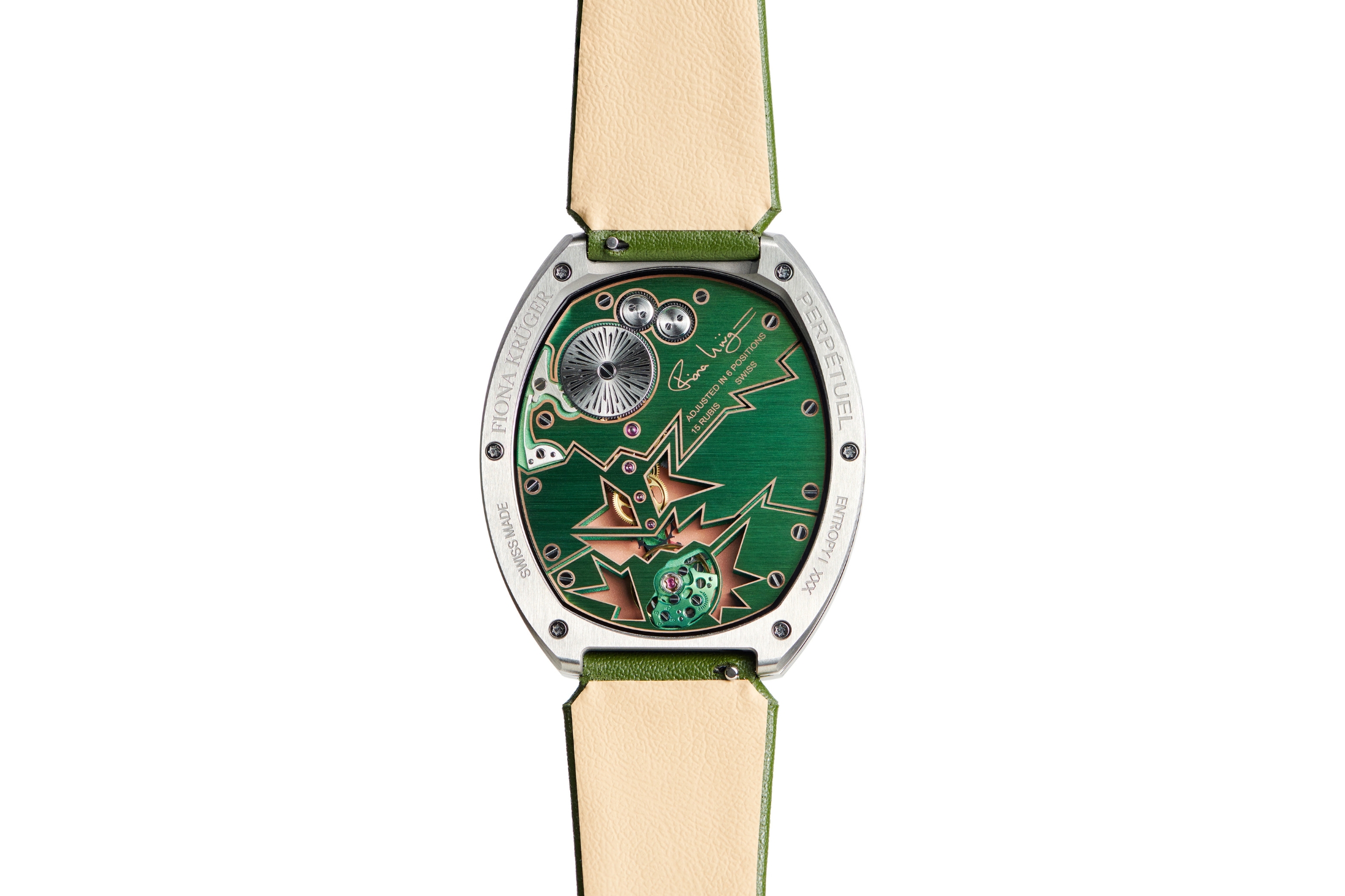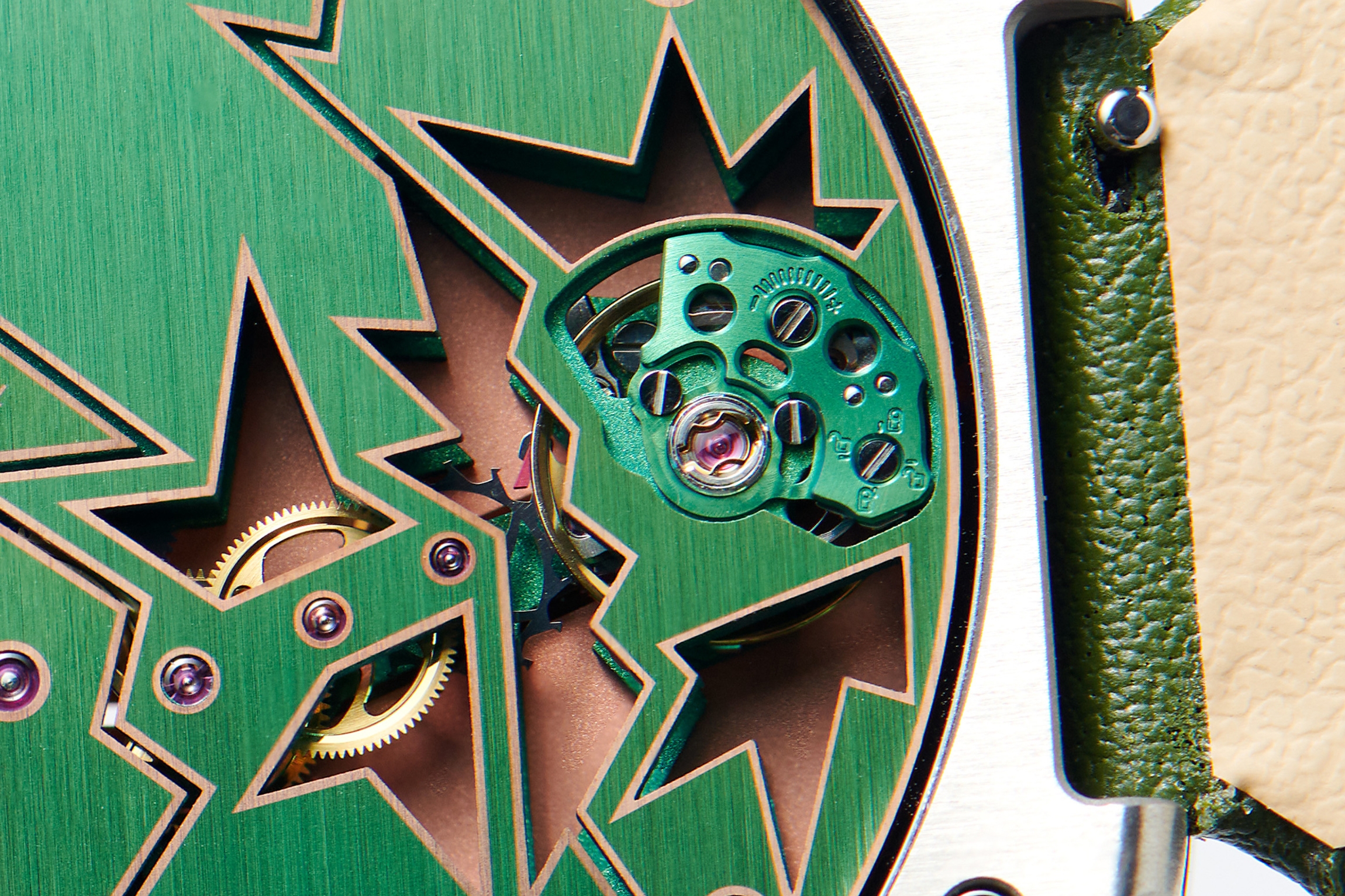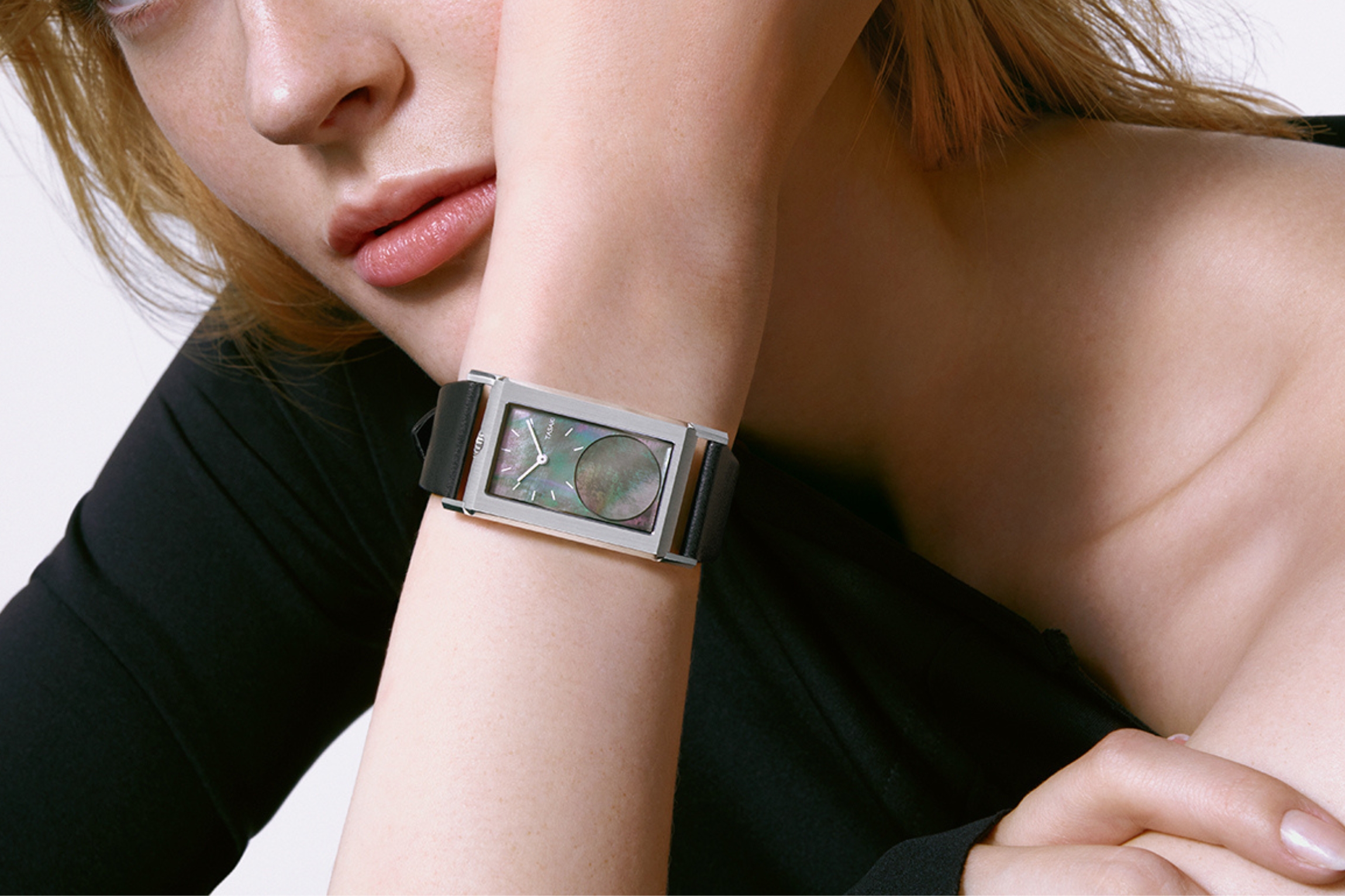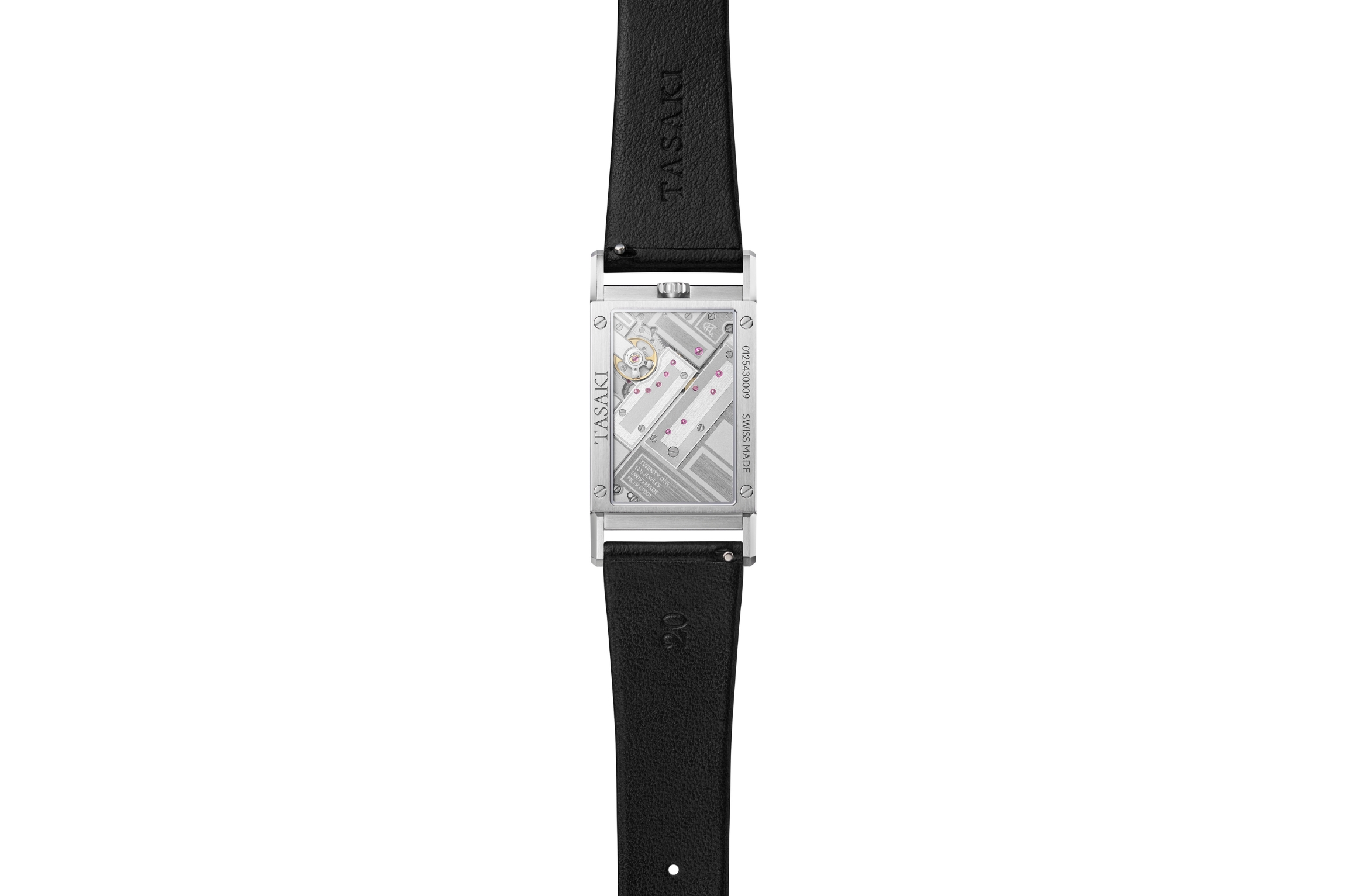
Her Hour: Fiona Krüger’s Mechanical Sculptures
Artist and watch designer extraordinaire talks about finding inspiration all around her, coming in terms with mortality through creation and her collaboration with Tasaki
A watch is a natural heir to the legacy of mechanical arts (we aren’t including quartz watches in this statement of course, not that there’s anything wrong with them). A machine with a heartbeat is more often than not appreciated for the beauty of its design (from dial to movement) than its utility. This is especially true for – well, you guessed it – mechanical watches. So, how about, watchmaking as an art field? This is hardly a groundbreaking statement, yet not every day you meet a watch designer who cut their teeth in an art school rather than the bench of a Genevan workshop, even though, technically, a watch is a kinetic sculpture. So, who's better to design one than, well, a sculptor?
“My brain works with a mix of art and mechanics,” says watch designer Fiona Krüger. An Edinburgh College of Art graduate, she received a degree in sculpture and “never in a million years” thought she would end up designing watches until she went to Switzerland to pursue her master's degree. “I wasn't interested in watches,” she says, “I thought they were expensive things for old guys – not my thing.” Yet a visit to the watch manufacturers changed things, “I saw the watchmakers assembling the movements, and I literally could not believe that people were doing that by hand at such a small scale, and they were putting together this little machine, which, when you wound it up, basically came to life.” She was completely convinced after visiting the Patek Philippe museum, “I saw their historical collection, which had watches shaped like angels, musical instruments and animals, and as an artist, it made me realize that a watch didn't have to be round and flat. You were unlimited or limited only by your imagination.”

And that’s how a horological protégé was born. “[When coming up with ideas], I purposely don't look at anything that has to do with watches,” she says, “You can find inspiration anywhere – the curve of a piece of furniture or the way that light comes through a stained glass window and casts a colored shadow.” But, regardless of where the inspiration comes from, as mechanical objects, watches take a long time to design and build, and Krüger is unwavering in her commitment to showcasing the skillset of every craftsman she works with. Even when it comes to such seemingly mundane parts of the process as gluing the sapphire glass to the dial, “the glue has to be applied by hand on the little lip, if there’s too much glue, then it spills out and the dial is ruined, and if it’s not enough, then the dial isn’t air or watertight.”

Krüger’s first collection featured whimsically macabre skull watches, encompassing various artistic techniques. First, the dials are made up of guilloché plates. Thanks to the different textures, these look not just like naked skulls but, rather, skulls wrapped in muscle tissue – a lovely McQueen meets Día de los Muertos situation. “There are tighter patterns around the eyes to kind of make them look a bit more sunken in, and then there's a more open pattern on the forehead and the cheeks, which is where your cheekbones and your forehead come out,” she explains.


But why skulls? Well, ask yourself, what’s the first thing that comes to mind when you think of time? Death. “As somebody that didn't know much about watches, I can understand and relate to time in a very human way, which is through your own mortality,” Krüger explains, “200 years from now, humans will still be asking themselves, ‘why are we here?’” The skull, she says, is a way to package this universal question into something recognizable.
As somebody that didn't know much about watches, I can understand and relate to time in a very human way, which is through your own mortality
Krüger’s talent has also attracted the attention of Japanese high jewelry maison Tasaki. “The first time I was in Tokyo, I saw their jewels at Isetan (Japan’s largest department store) and was so amazed by their avant-garde design that I found the email of Tasaki’s CEO and proposed a collaboration.” Talk about bold! The first outreach attempt, however, was unsuccessful, but, after some time, when she reached out again, the suits were all ears. “They invited us to Japan, took us to their pearl farms and the atelier, which was very inspiring.”
For their first collaboration (yes, there was more than one), Krüger wanted to “desacralize” the notion of mother of pearl. “To me,” she says, “mother of pearl means nice watches for nice ladies, which is not my vibe.” So, she enlisted the great Andy Warhol as her muse – his series of inmates’ portraits, 13 Most Wanted Men, to be exact. “He used this half-tone dotted line, which you use a lot in newspaper printing, and it creates light and shade,” Krüger explains, “so I wanted to print this pattern on top of the mother-of-pearl dial, making those bits into little pearls almost.”


The second watch Krüger designed for the Japanese maison, the Face of Tasaki, is even more fascinating. Its dial consists of two mother-of-pearl plates: a square and a circular one, with the latter being the concealed rotor, yet both of those parts are made of a single mother-of-pearl slate. “You can see it when the dial is at rest,” she explains, “all the veins align.” And, if you flip the watch and look at the movement, you’ll see a mosaic, almost, of rectangles engraved onto it. “This is the pearl farm,” Krüger laughs. Or its interpretation rather, “It has this distinct grid-like structure, which you can also see in Tasaki’s flagship store in Ginza.”
There’s more than one way to create a watch. And, as emphasized by Fiona Krüger and her pieces, the inspiration required for this doesn’t have to come from within the industry. On the contrary, often most interesting pieces draw in from beyond and, with that, bring out new ways of interpreting time.
